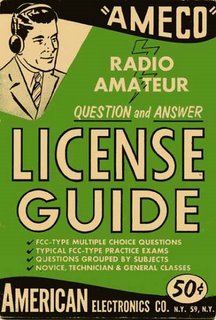 The acronym N.A.R.B.A. stands for the North American Radio Broadcasting Agreement. It was an early radio treaty that came a little late for some. In 1941 the United States, Canada, Mexico, Cuba, the Dominican Republic and Haiti had to have a talk. The text is here.
The acronym N.A.R.B.A. stands for the North American Radio Broadcasting Agreement. It was an early radio treaty that came a little late for some. In 1941 the United States, Canada, Mexico, Cuba, the Dominican Republic and Haiti had to have a talk. The text is here.The U.S. had been powering up some "super-power" AM radio stations, like WLW's 500,000-watt Special Temporary Authority. Mexico had begun it's now long-standing tradition of "Border-blasters." A coverage area "arms race" had begun. But it was a war that everyone knew was not winnable. More and more massively powerful stations led only to more and more adjacent channel and distant interference. It led to less radio, not more.
The planning for the meeting actually began in the 1930s. The U.S. entered the meeting wanting to reserve the ability to fight the border blasters not with power or HAAT limits, but the right to counter with it's own super-casters if need be.
I'm going to quote Mark Durenberger so I dont blow this part: "The NARBA language essentially stated that while 1-B stations were given a maximum authorized power of 50 kW, the 1-As would be authorized a minimum power of 50 kW. In this respect, the minimum vocabulary the U.S. endorsed as a signatory to NARBA would differ from the FCC's own 50-kW maximum language. In exchange for this subtlety, the United States gained a major concession from its neighbors. 1-A co-channel stations in adjoining countries could be located no closer than 650 miles from that country's common boundary with the United States. By geographical happenstance this language prohibited, with few exceptions, any co-channel operation on U.S. 1-A channels anywhere in North America. When the delegates returned home, the United States had its continued protection on 25 1-A channels. To answer the demand for more frequencies, the United States agreed to an expansion of the band to 1600 kc/s. "
In accordance with the treaty, clear channel frequencies were set aside across the radio dial, at a
To implement the NARBA changes, the United States ordered a massive frequency shuffling. Most stations moved up the band, a step of 10 to 30 kc/s. As an interesting note, few stations did any more retuning than absolutely necessasary. As a result many AM transmitting towers are slightly taller than what is optimal for their present operating frequency.
N.A.R.B.A. is no longer in effect. It has been superseded by working agreements made in the early 1980s between the U.S. and Canada and between the U.S. and Mexico, and by an ITU-sponsored agreement covering all of the Western Hemisphere.
In 2000 Radio World did a great six part series that includes much of this historical treaty. It was titled Behind the Clear-Channel Matter.
Go here: http://www.nrcdxas.org/articles/




No comments:
Post a Comment